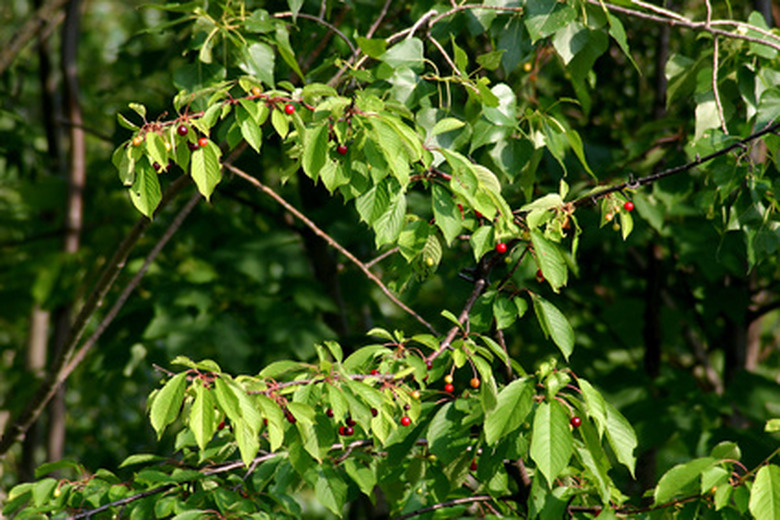Cherry Tree Leaf Identification
The wood, ornamental beauty and fruit of North American cherry trees make them prized specimens. The leaves of the cherry trees growing wild across the continent have characteristics you may use to identify them.
Features
All cherry trees have a single-bladed leaf, with the margins featuring a series of serrations looking like miniature saw blade teeth, according to the book "Trees of North America." Cherry leaves develop alternately along the branches rather than in pairs.
Shape
Cherry leaves are typically longer than they are wide. Measure the leaves of black cherry, for example, and you will discover they average between 2 and 6 inches in length, with widths of 1 inch to 1 1/2 inches. These leaves are elliptical or oval, as are the leaves of species such as common chokecherry and bitter cherry. Other cherry trees, including Carolina laurel cherry and pin cherry, possess a more lance-shaped leaf.
Colors
Colors of cherry foliage vary between the upper portion of the blade and its undersides. Look at black cherry, for instance, and notice that while the upper surface is shiny dark green, its underside is a much lighter shade of green. In autumn, many cherry species' leaves—including black cherry, pin cherry and common chokecherry—change to yellow and/or red.
References
- Texas A&M University Texas Forest Service: Black Cherry
- "Trees of North America"; C. Frank Brockman; 1996
- "National Audubon Society Field Guide to Trees"; Elbert L. Little; 1980
